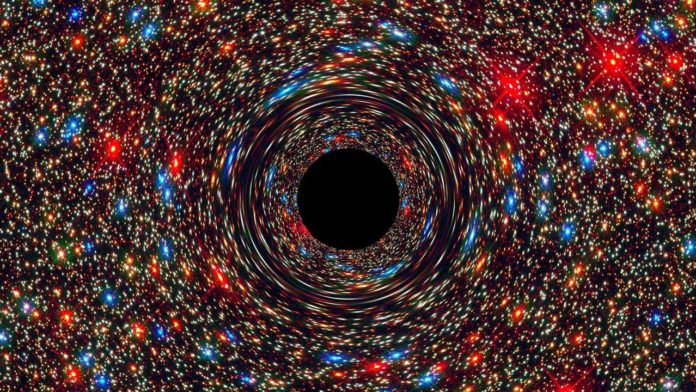A recent study suggests the possible existence of black holes larger than supermassive black holes. According to the study, these ‘stupendously large black holes’ or SLABS are already observed in the centers of galaxies.
Scientists from the Queen Mary University of London studied the formation of SLABs and their potential limits to their size. Studying SLABS could provide scientists a powerful tool for cosmological tests and improve our understanding of the early Universe.
Astronomers believe that supermassive black holes form within the center of the host galaxy. They grow their size by swallowing stars and gas from their surroundings or merging with other black holes.
In SLABS, there is an upper limit, somewhat above ten billion solar masses, on their mass.
In this study, scientists proposed another possibility for how SMBHs could form, which might evade this limit. They suggest that such SLABs could be ‘primordial,” forming in the early Universe and well before galaxies.
As ‘primordial’ black holes don’t form from a collapsing star, they could have a wide range of masses, including very small and stupendously large ones.
Professor Bernard Carr said: “We already know that black holes exist over a vast range of masses, with an SMBH of four million solar masses residing at the center of our galaxy. While there isn’t currently evidence for the existence of SLABs, it’s conceivable that they could exist, and they might also reside outside galaxies in intergalactic space, with interesting observational consequences. However, surprisingly, the idea of SLABs has largely been neglected until now.”
“We’ve proposed options for how these SLABs might form and hope that our work will begin to motivate discussions amongst the community.”
Journal Reference:
- Bernard Carr et al. Constraints on stupendously large black holes, Monthly Notices of the Royal Astronomical Society (2020). DOI: 10.1093/mnras/staa3651
